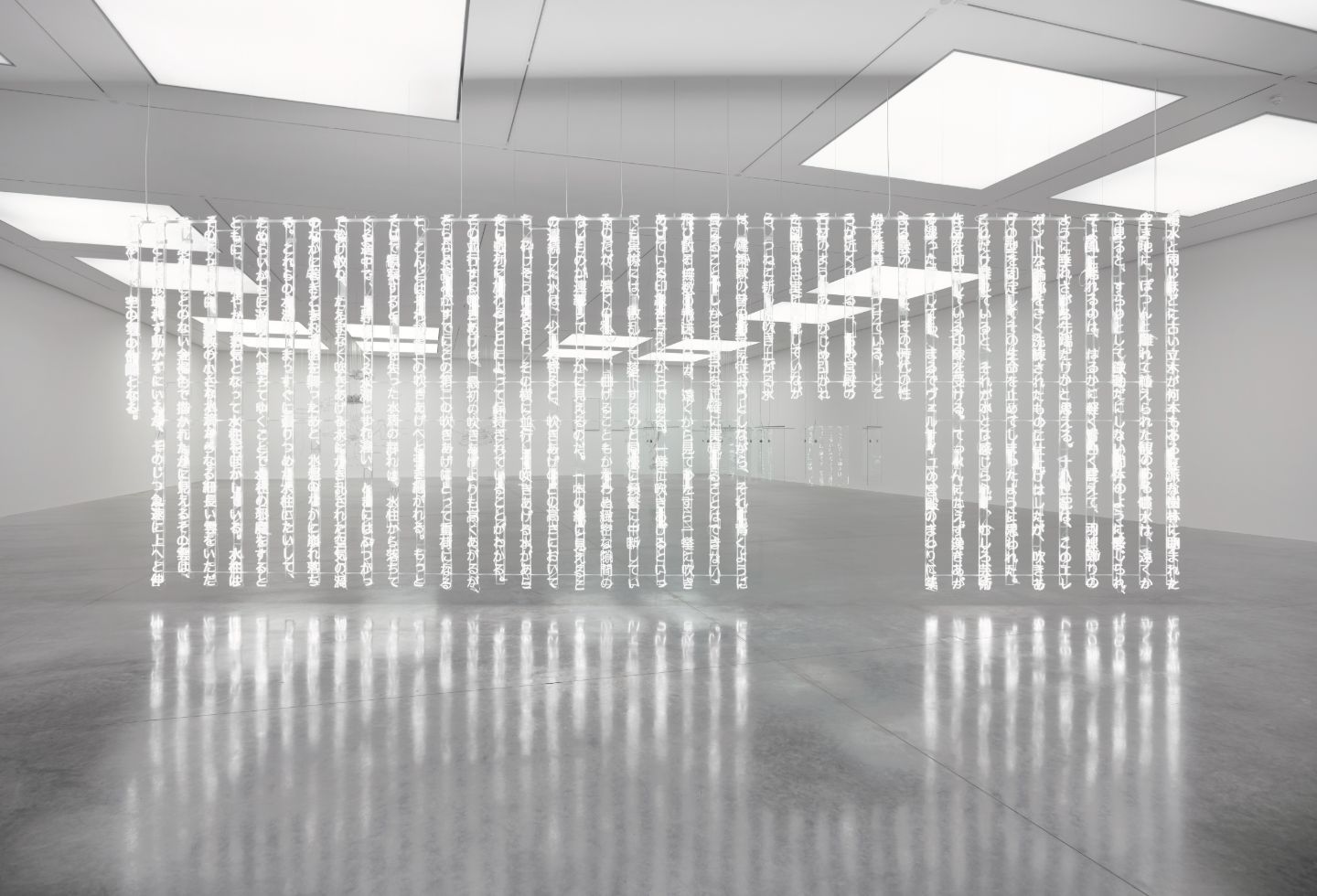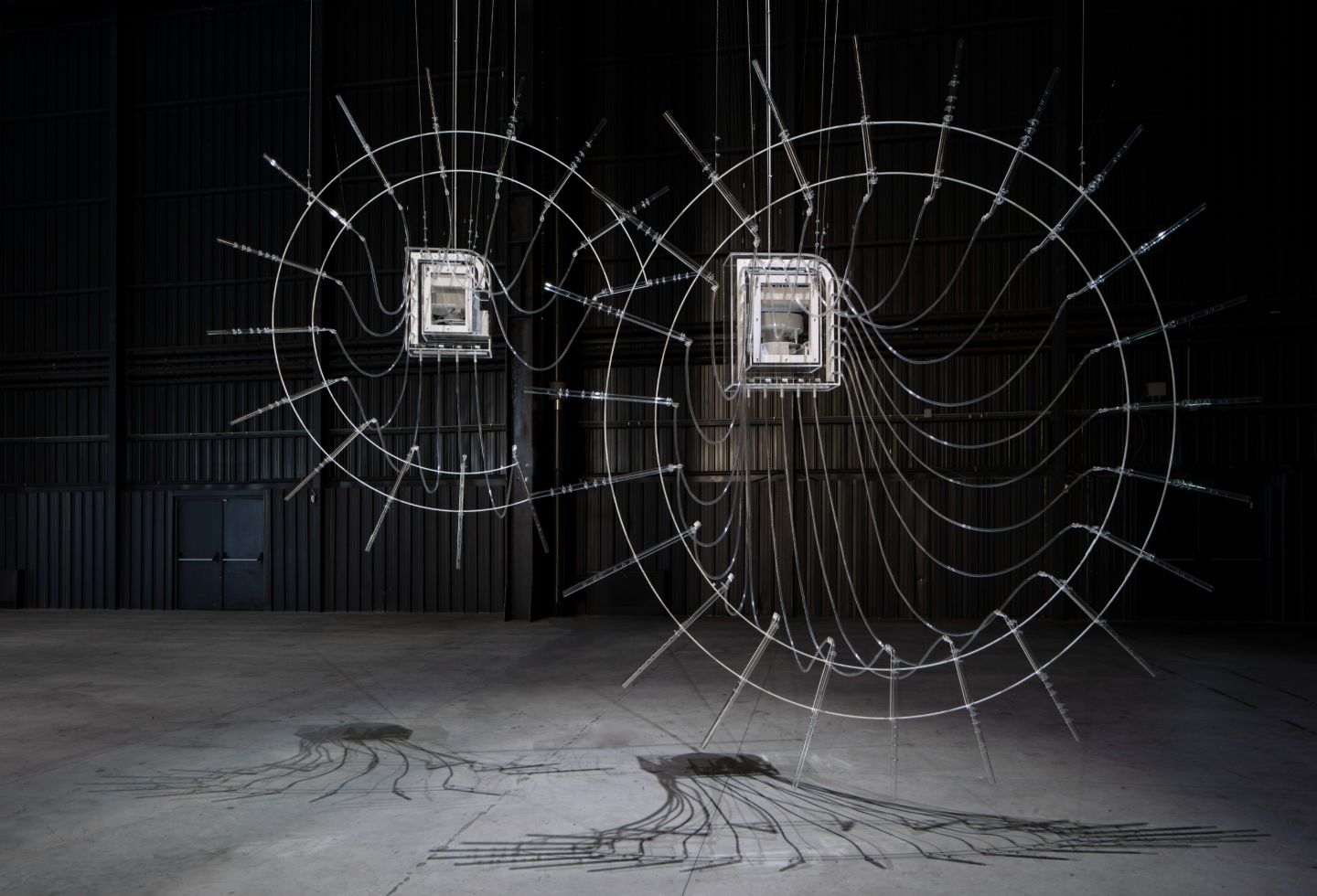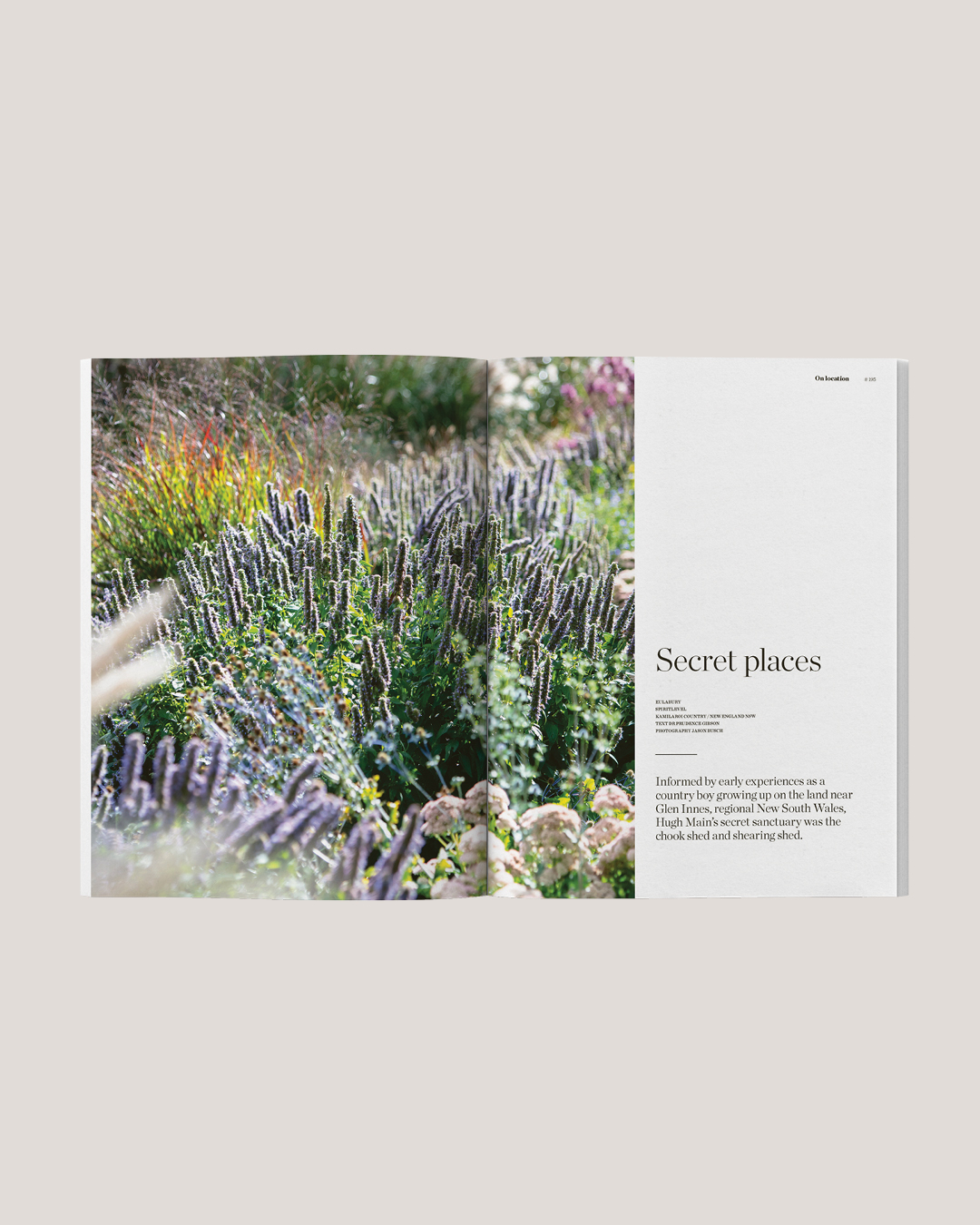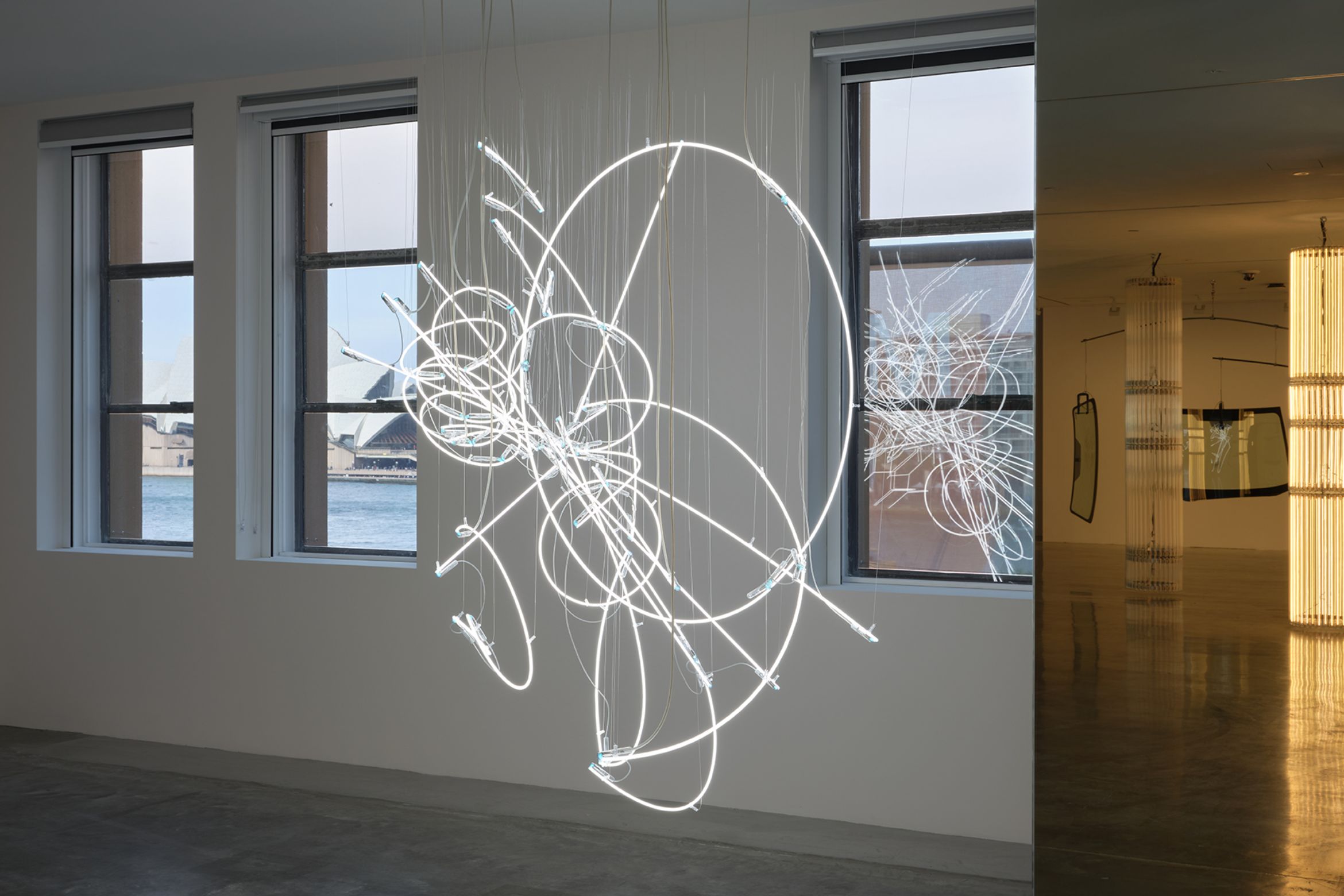Cerith Wyn Evans’ …. in light of the visible is transformational, experiential and utterly beautiful. Co-curated by MCA Australia’s Director of Curatorial & Digital, Lara Strongman, and Assistant Curator, Antares Wells, the exhibition spans 15 years of Evans’ practice, featuring major light and sound works alongside newly commissioned site-specific installations that respond directly to Sydney‘s harbour environment and the architecture of the Museum of Contemporary Art Australia. The conceptual framework is as elegant as it is ambitious: audiences are invited to move through the spaces as if strolling through a Japanese garden – a spatial metaphor that emerged from Evans’ deep engagement with Japanese gardens, the aesthetics of Buddhism and time spent annually in Kyoto.
The Welsh-born artist (b. 1958), whose work explores the relationships between language and space, time and perception, has created what Strongman describes as “poetic work of the deepest artistic intelligence, also spectacularly beautiful.” Distilling ideas into forms, his art is underpinned by wide-ranging interests in music, Noh theatre, film, architecture, literature, philosophy, phenomenology, modes of communication and art history.
Experimental, yet meticulously planned, luminous environments of light and sound fill the museum spaces. Evans reflects: “When I think about what my contribution is to putting on a piece of poetry in the world, I don’t know how to report that unless it is through my work. I think of my life as being – one thing onto the next thing.” The result is relentlessly impressive.
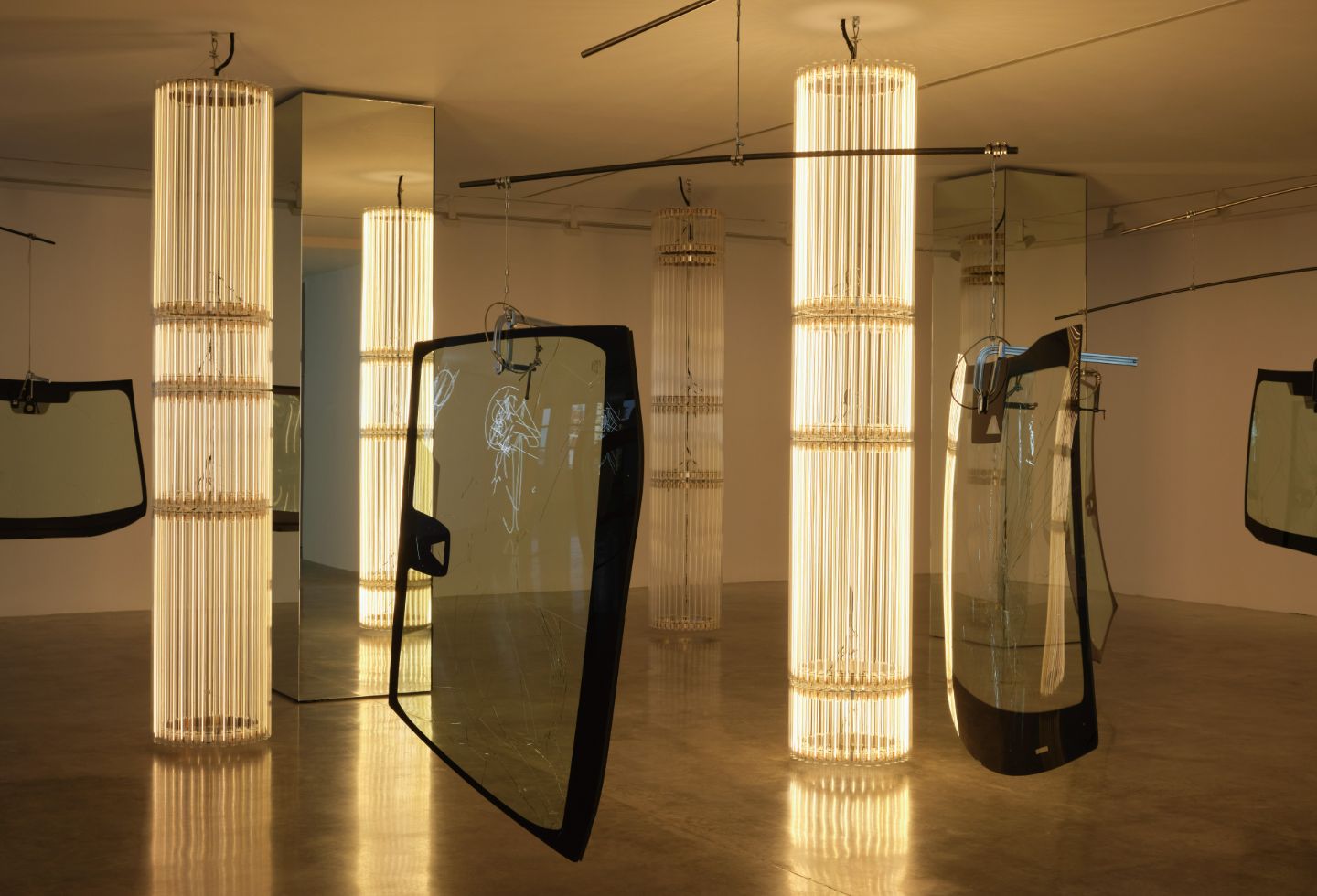
Site-specificity is a critical aspect of Evans’ practice. Sydney’s particular light conditions and the MCA’s proximity to the harbour influenced the calibration and positioning of key works. An early research visit exploring the Royal Botanic Gardens and observing the ferries coming and going at Circular Quay sparked ideas around embedding the neighbouring surrounds into the exhibition – particularly through sound and choreography of movement.
Circular Quay, its ferries and activity, resonate through the galleries in the work Two Gravity Gongs, 2025, where Evans has “pulled the sound inside”. Additionally, Still Life (In course of arrangement…), 2025 features native verdant Australian plants, which slowly revolve, reinforcing their artifice within the museum spaces, albeit with humour.
The exhibition’s design philosophy further embraces a responsive approach to site, where, according to Strongman, the “volume of a room, sonic properties, particular season or place creates fresh possibilities for experiencing the work.” Evans was particularly struck by Sydney’s distinctive light conditions, in comparison to the northern hemisphere where “there is a cold light. When I came here, it was such a reveal.”
Related: The 2025 Archibald, Wynne and Sulman Prizes
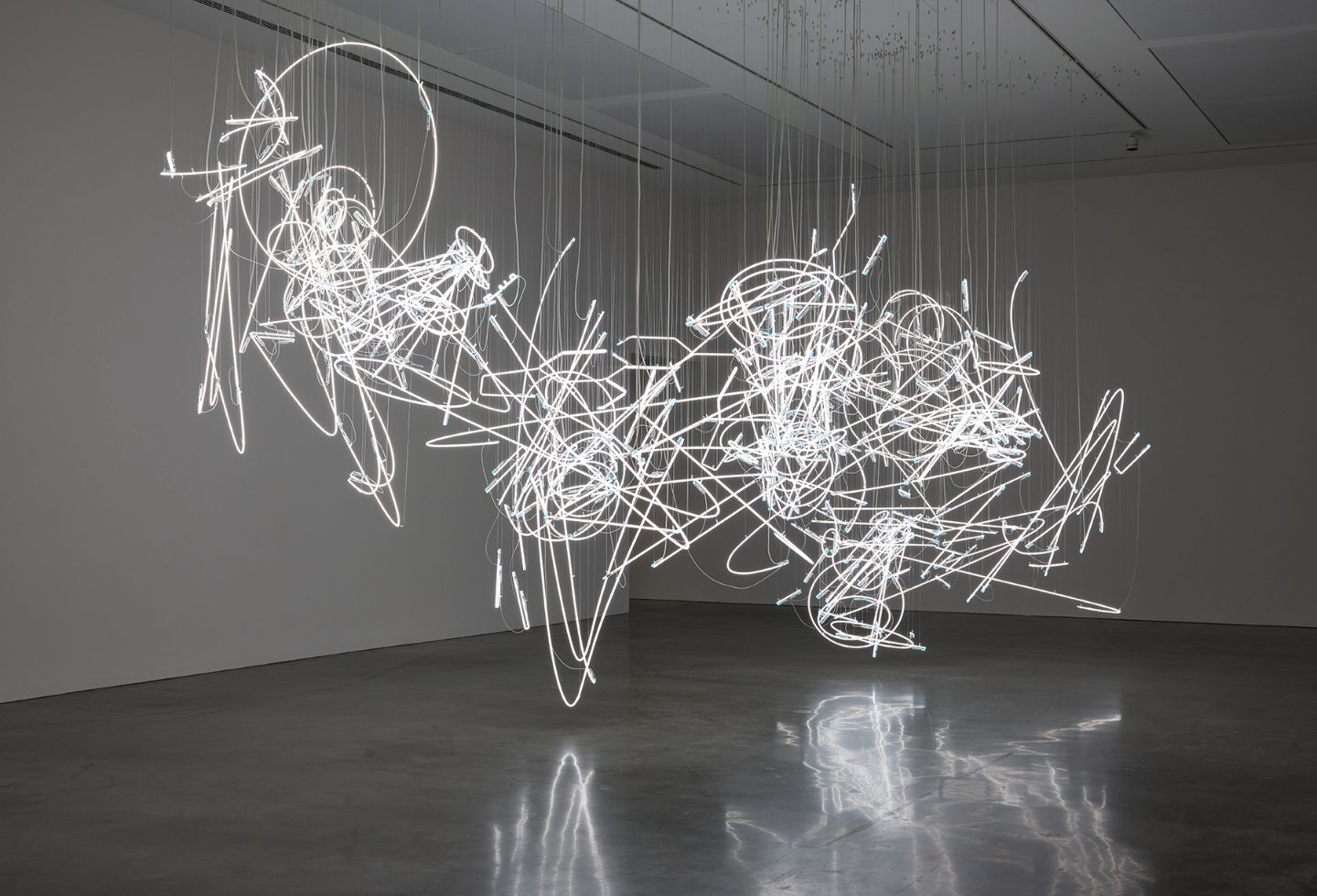
This awareness permeates every aspect of the exhibition. The newly commissioned Sydney Drift (2025) responds specifically to the city’s winter light conditions through hundreds of suspension points that reimagine the gallery’s relationship to its harbour setting.
Works from the Neon Forms (after Noh) series create large-scale neon drawings suspended in space. A visual cacophony of neon lines, gestures, swirls and marks coalesce. Seemingly chaotic, the process is remarkably ordered. Evans explains further: “The work is deeply planned… however, I can also throw caution to the wind and it can land somewhere.” Further, the fragility of these works lends a kind of precarity to the intended Japanese garden stroll.
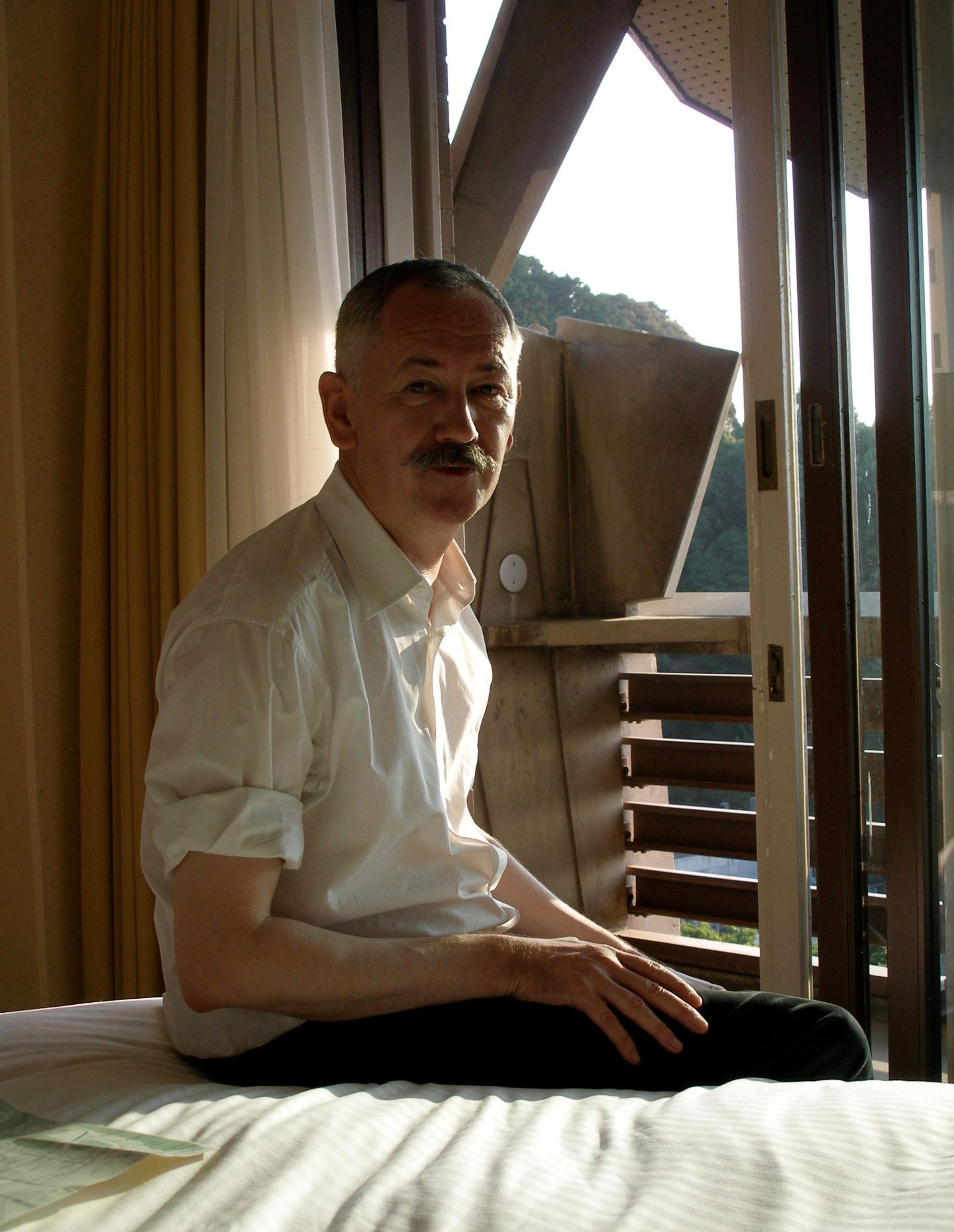
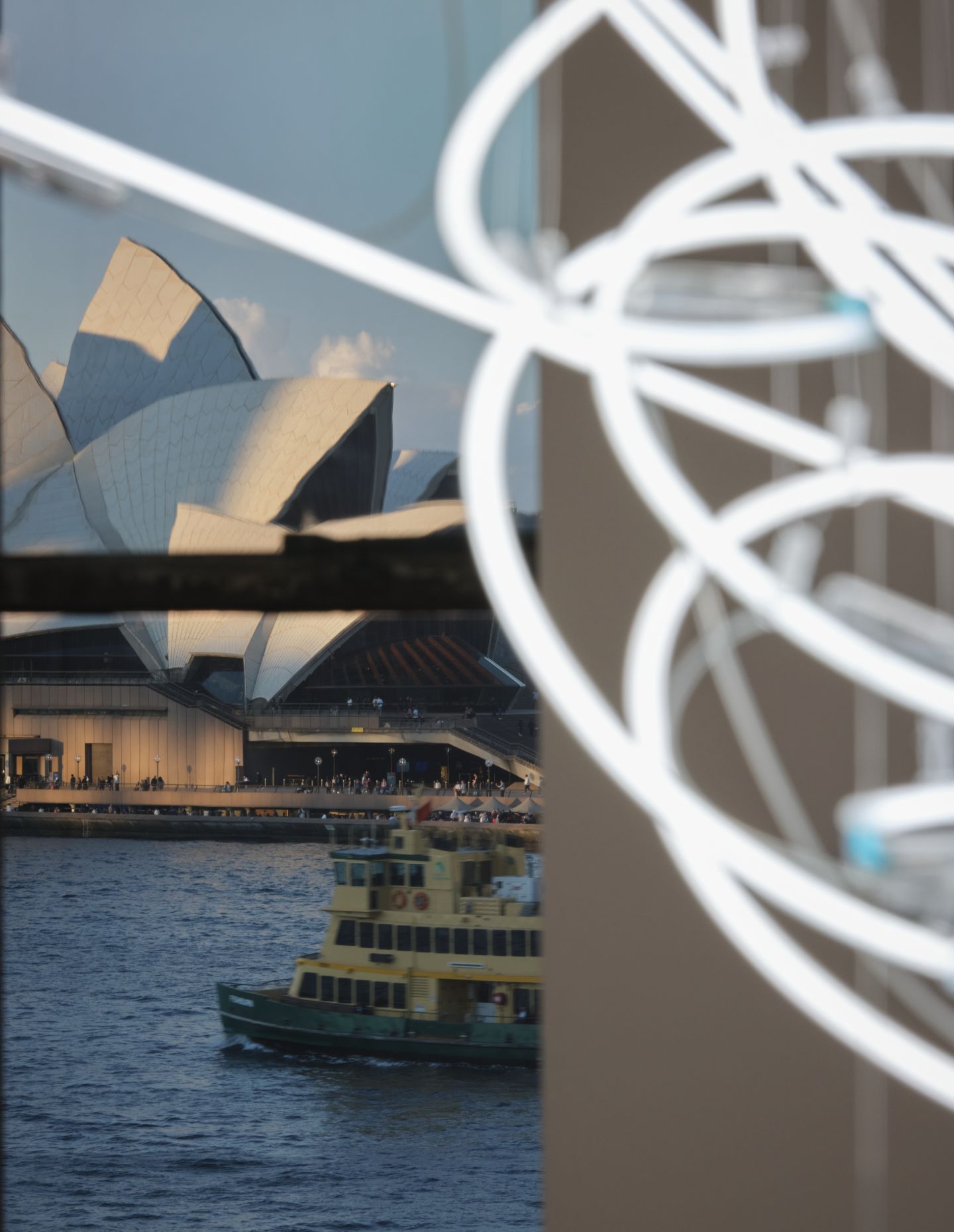
Important highlights include Composition for 37 flutes (2018), the Hepworth Sculpture Award-winning installation which comprises 37 crystal glass flutes and compressors that breathe air according to a predefined algorithm. Emitting atmospheric sounds that fluctuate between harmony and dissonance, the effect is reminiscent of Buddhist singing bowls or human breathing. “One of the things I love about sound is its capacity to confuse, irritate and annoy,” notes Evans.
Adjacent to this piece is the large-scale neon “F=O=U=N=T=A=I=N”, 2020, which is based on Kazuyoshi Yoshikawa’s Japanese translation of Sodom and Gomorrah (1921/22), an excerpt of Marcel Proust’s In Search of Lost Time. The 3-metre high, 10-metre wide architectural wall of white neon presents Proust, translated from French into Japanese text, as a luminous suspended narrative. A temple gate opening invites audiences within. The neon illuminates in segments and once turned off, vanishes in a similar fashion to that of spoken language or sound.
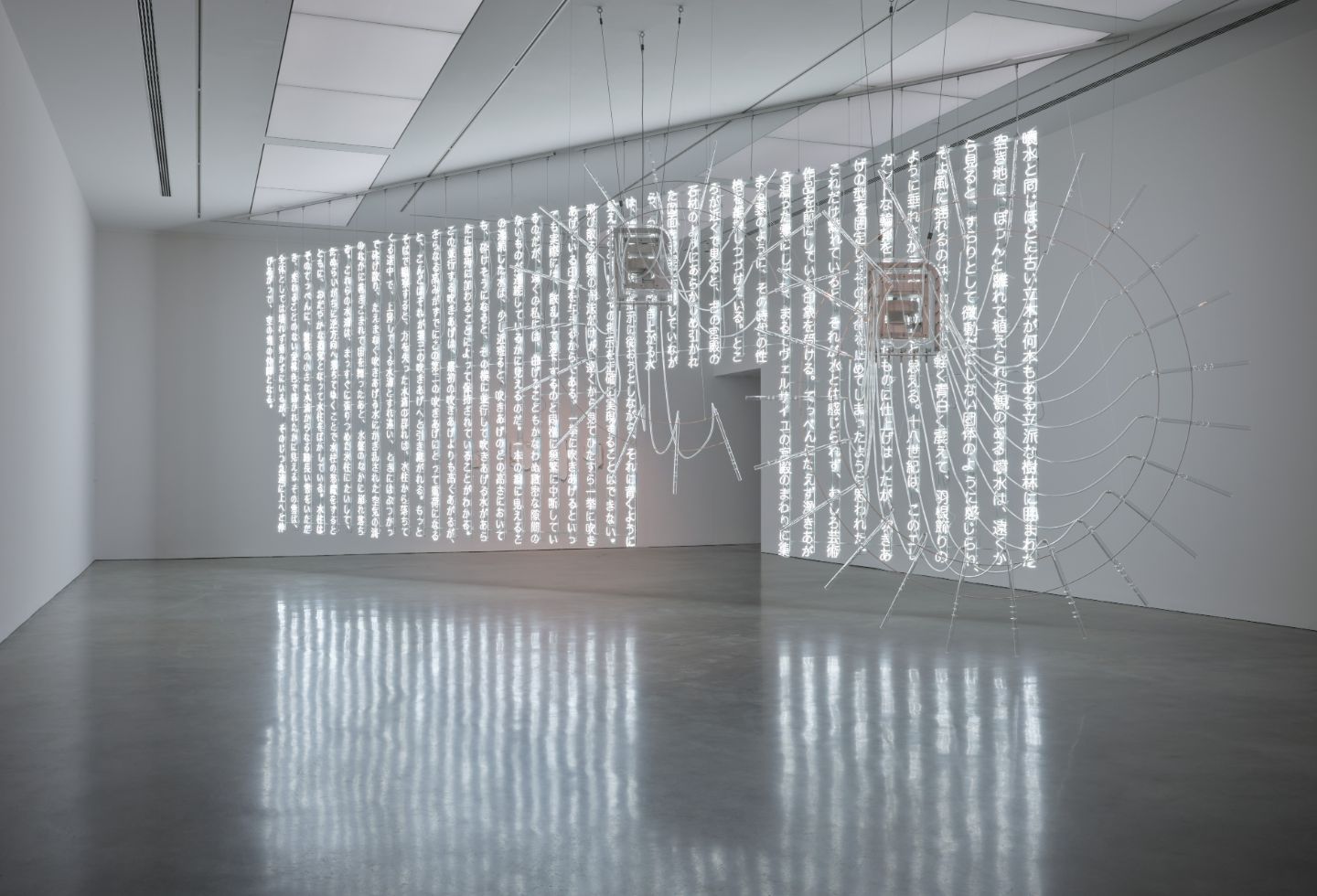
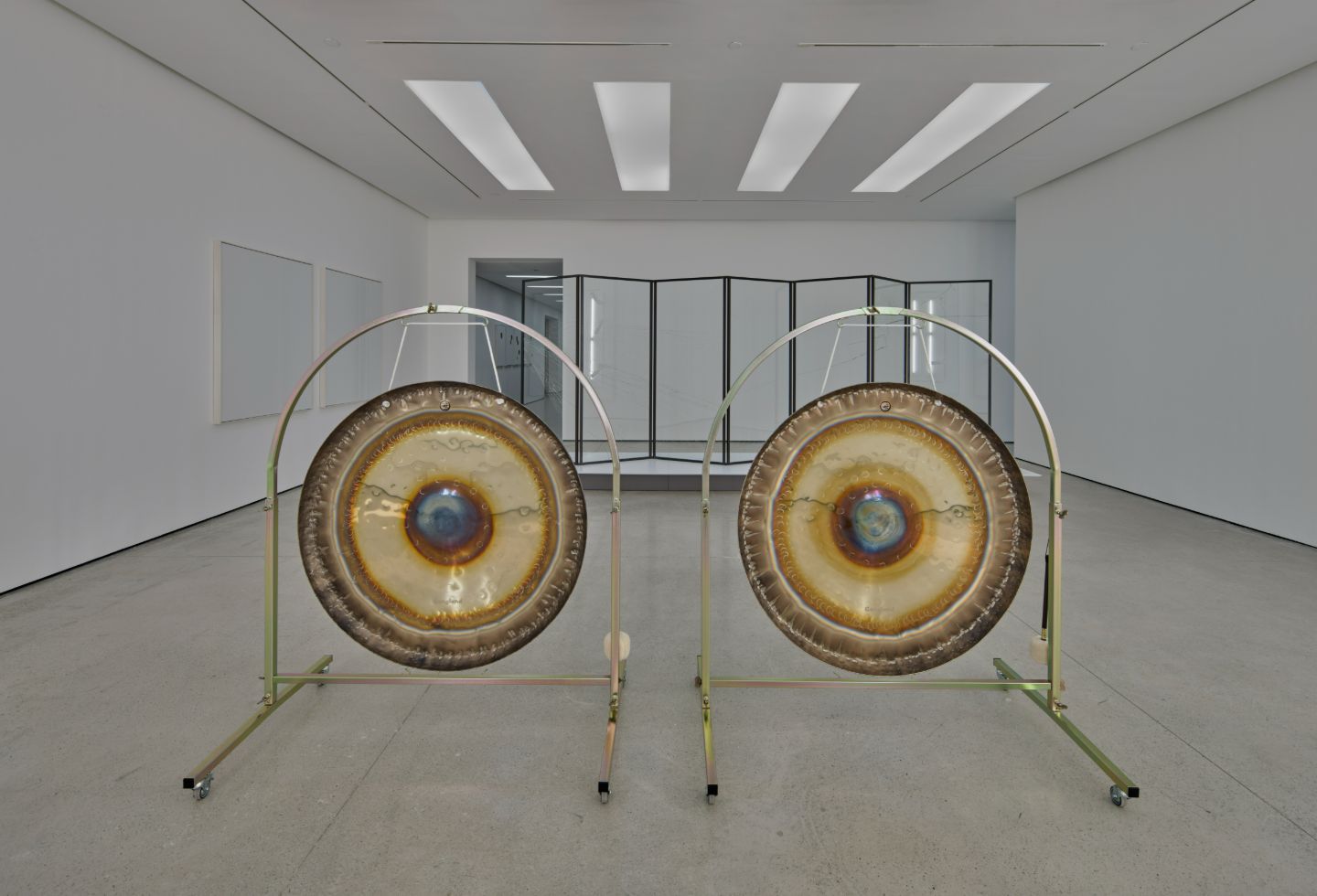
References to art history are present throughout. The Indeterminate painting series – minimalist white surfaces that comprise aerosol varnish and acrylic on canvas recall Barnett Newman’s zips; a series of paintings titled Décor – Relic comprise the ruins of decommissioned art gallery walls in an homage to the readymade; and works such as phase shifts (after David Tudor), 2023 feature a series of suspended car and truck windscreens clustered as mobiles, in tribute to Dadaist Marcel Duchamp.

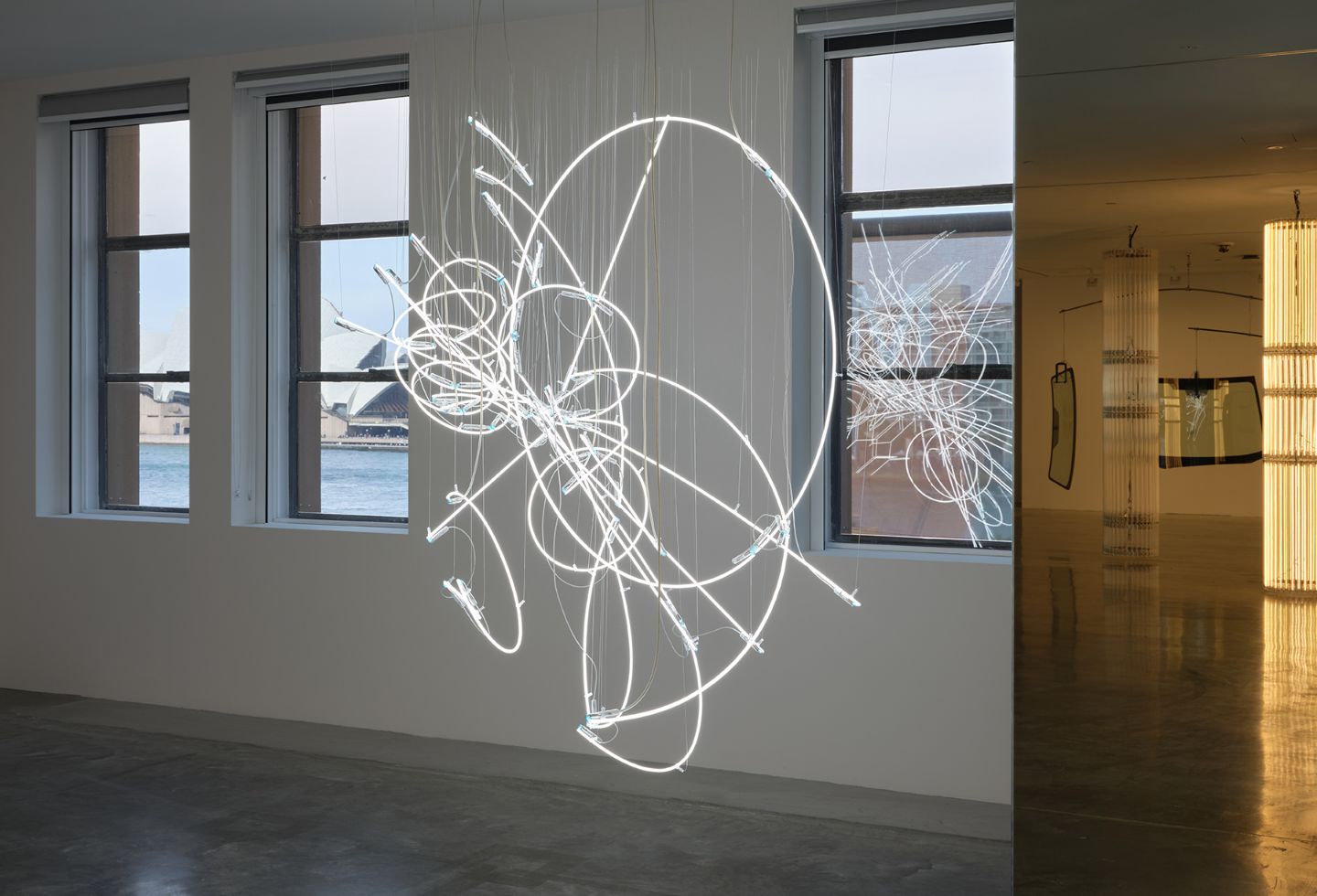
The absence of traditional wall labels encourages pure looking and thinking, allowing audiences to experience the work in an open-ended manner. In terms of the audience experience, Evans says that “I would like them to feel compassion in their lives, hope, happiness and decency. Peace, love and understanding.”
In an age of digital overwhelm and acceleration, …. in light of the visible offers something increasingly rare – a space for stillness and contemplation where light, sound and time become vessels for profound human connection and a reflection on the quiet power of presence itself.
